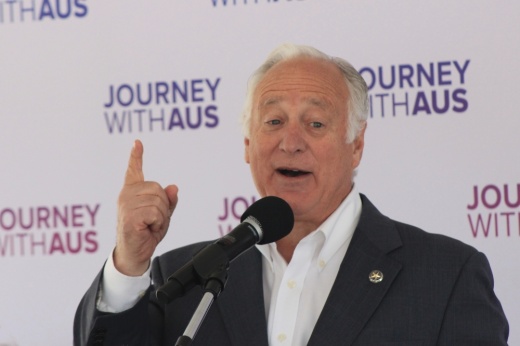“When this airport opened in 1999, it was designed to serve a city that was becoming a big international city. Since then, Austin has transformed into a global destination and welcomes tens of millions of visitors every year,” Austin Mayor Kirk Watson said. “... With that growth comes a significant responsibility, and that responsibility is to ensure that our infrastructure keeps pace with the needs of our residents and our visitors."
Sorting out the details
Marking another milestone in the parade of projects coming online for the airport's sweeping multimillion-dollar expansion, the new parking garage will add an estimated 7,000 spaces, as well as electric vehicle charging stations and smart parking and toll gate technologies.
“This is a very big garage—it’s Texas-sized. It’s 2.5 million square feet spread across seven floors with 1000 spaces per floor,” said Cris Ruebush, a principal at PGAL, the design firm behind the project.
The garage will feature dedicated entrance and exit ramps for quick access and a red-and-green light system to easily spot open spaces, Ruebush said.
Other project highlights include roadway realignment and additional lanes on Presidential Boulevard and an enclosed pedestrian bridge connecting Yellow and Blue Garages for increased passenger access to the terminal.
The Economy Lot B parking closed this month to make way for work on the new structure. Crews will complete roughly half of the new parking spaces by next year, with the project estimated to be fully completed in 2027, according to airport officials.
Some context
Previously approved by Austin’s City Council, the $15 million for design and $250 million for construction of the garage is fully funded by the airport. The project is paid for through airport reserves, revenue, and future bonds—without using local tax dollars.
The project is part of larger plans for a multi-year expansion program, known as Journey with AUS.
The completed project is also expected to drive other economic growth in Central Texas by improving critical airport services for business and tourism, ABIA officials said.
“We're not just building a bigger airport, we're building a gateway that would connect Austin to the world,” ABIA CEO Ghizlane Badawi said during another recent project launch in the fall of 2024.
To find more information for follow expansion progress, click here.





